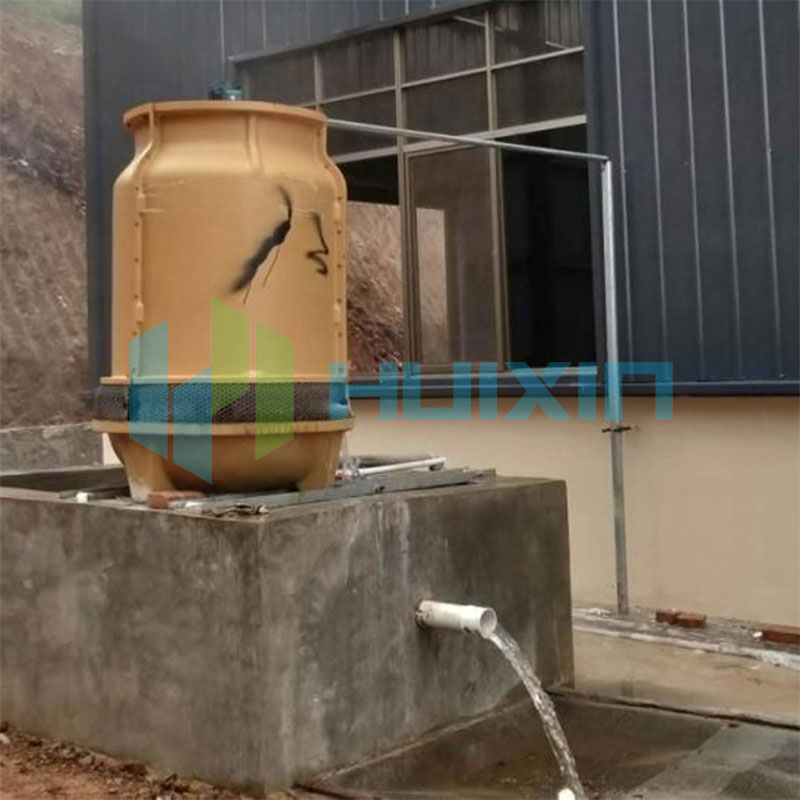 English
English Español
Español  Português
Português  русский
русский  Français
Français  日本語
日本語  Deutsch
Deutsch  tiếng Việt
tiếng Việt  Italiano
Italiano  Nederlands
Nederlands  ภาษาไทย
ภาษาไทย  Polski
Polski  한국어
한국어  Svenska
Svenska  magyar
magyar  Malay
Malay  বাংলা ভাষার
বাংলা ভাষার  Dansk
Dansk  Suomi
Suomi  हिन्दी
हिन्दी  Pilipino
Pilipino  Türkçe
Türkçe  Gaeilge
Gaeilge  العربية
العربية  Indonesia
Indonesia  Norsk
Norsk  تمل
تمل  český
český  ελληνικά
ελληνικά  український
український  Javanese
Javanese  فارسی
فارسی  தமிழ்
தமிழ்  తెలుగు
తెలుగు  नेपाली
नेपाली  Burmese
Burmese  български
български  ລາວ
ລາວ  Latine
Latine  Қазақша
Қазақша  Euskal
Euskal  Azərbaycan
Azərbaycan  Slovenský jazyk
Slovenský jazyk  Македонски
Македонски  Lietuvos
Lietuvos  Eesti Keel
Eesti Keel  Română
Română  Slovenski
Slovenski  मराठी
मराठी  Srpski језик
Srpski језик
How cooling towers work
2022-03-10
The water in the counter-flow cooling water tower enters the water filling from top to bottom, and the air is sucked from the bottom to the top, and the two flow in opposite directions. The actual appearance is shown in the figure. It has the characteristics that the water distribution system is not easy to block, the water filling can be kept clean and not easy to age, the moisture backflow is small, the anti-freezing measures are convenient to set, the installation is simple, and the noise is small.
The water in the cross-flow cooling water tower enters the water filling from top to bottom, and the air flows horizontally from the outside of the tower to the inside of the tower, and the two flow directions are vertical and orthogonal. This type of water tower generally needs more fillers for heat dissipation, the water-spraying fillers are easy to age, the water distribution holes are easy to block, the anti-icing performance is poor, and the moisture backflow is large; but it has good energy-saving effect, low water pressure, small wind resistance, and no dripping noise. It can be installed in residential areas with strict noise requirements, and the maintenance of water filling and water distribution system is convenient.
According to the different classification methods, there are many types of cooling water towers. For example, according to the ventilation method, it can be divided into natural ventilation cooling water towers, mechanical ventilation cooling water towers, and mixed ventilation cooling water towers; according to the way of air contact in water areas, it can be divided into wet type cooling towers. Cooling water tower, dry cooling water tower and dry and wet cooling water tower; according to the application field, it can be divided into industrial cooling water tower and central air conditioning cooling water tower; according to the noise level, it can be divided into ordinary cooling water tower, low noise cooling water tower, ultra-low noise cooling water tower Cooling water tower, ultra-quiet acoustic cooling water tower; according to the shape, it can be divided into circular cooling water tower and square cooling water tower; it can also be divided into jet cooling water tower, fanless cooling water tower, etc.
1. The structure of the cooling water tower
The internal structure of the cooling water tower is basically the same. The following is a detailed introduction to the counter-flow cooling water tower as an example. The following figure shows the internal structure of a typical counter-flow cooling water tower. It can be seen that it is mainly composed of a fan motor, a reducer, a fan, a water distributor, a water distribution pipe, a water spray filler, a water inlet pipe, a water outlet pipe, and an air inlet window. , Cooling tower chassis, water collector, upper shell, middle shell and tower feet, etc.
The fan motor in the cooling water tower is mainly used to drive the fan to operate, so that the wind can enter the cooling water tower. The water distributor and the water distribution pipe constitute a sprinkler system in the cooling water tower, which can evenly sprinkle water into the sprinkler filler. The water-spraying filler can make the water form a hydrophilic film inside it, which is convenient for heat exchange with the wind and cooling the water.
The internal structure of the counter-flow cooling water tower is basically the same as that of the cross-flow cooling water tower. The difference is that the position of the air inlet window is different, which makes the contact surface between the air and the water different.
2. Working principle of cooling water tower
In the central air conditioner, the cooling water tower is mainly used to cool the water, and the cooled water is sent to the condenser through the connecting pipeline to cool the condenser. After the heat exchange between the water and the condenser, the water temperature rises and flows out from the outlet of the condenser. After the cooling water pump circulates it, it is sent to the cooling water tower again for cooling, and the cooling water tower sends the cooled water to the condenser. Heat exchange is performed again to form a complete cooling water circulation system.
When the dry air is pumped by the fan, it enters the cooling water tower through the air inlet window, and the high-temperature molecules with high steam pressure flow to the air with low pressure. into the water pipe, and spray into the water filling. When the air is in contact, the air and the water directly conduct heat transfer to form water vapor. There is a pressure difference between the water vapor and the newly entering air. Under the action of the pressure, the evaporation is carried out, so as to achieve evaporation and heat dissipation, and the heat in the water can be taken away. , so as to achieve the purpose of cooling.
The air entering the cooling water tower is dry air with low humidity, and there is a significant difference in water molecule concentration and kinetic energy pressure between water and air. When the fan in the cooling water tower is running, under the action of the static pressure in the tower, the water molecules are continuously evaporated to the air to form water vapor molecules, and the average kinetic energy of the remaining water molecules will decrease, thereby reducing the temperature of the circulating water. It can be seen from this analysis that evaporative cooling has nothing to do with whether the temperature of the air is lower or higher than the temperature of the circulating water. As long as there is air continuously entering the cooling water tower and the circulating water evaporates, the water temperature can be reduced. However, the evaporation of circulating water into the air is not endless. Only when the air in contact with the water is not saturated, the water molecules will continue to evaporate into the air, but when the water molecules in the air are saturated, the water molecules will not Evaporation will be carried out again, but in a state of dynamic equilibrium. When the number of water molecules evaporated is equal to the number of water molecules returned to the water from the air, the water temperature remains constant. Therefore, it was found that the drier the air in contact with the water, the easier the evaporation will proceed, and the easier the water temperature will be lowered.





